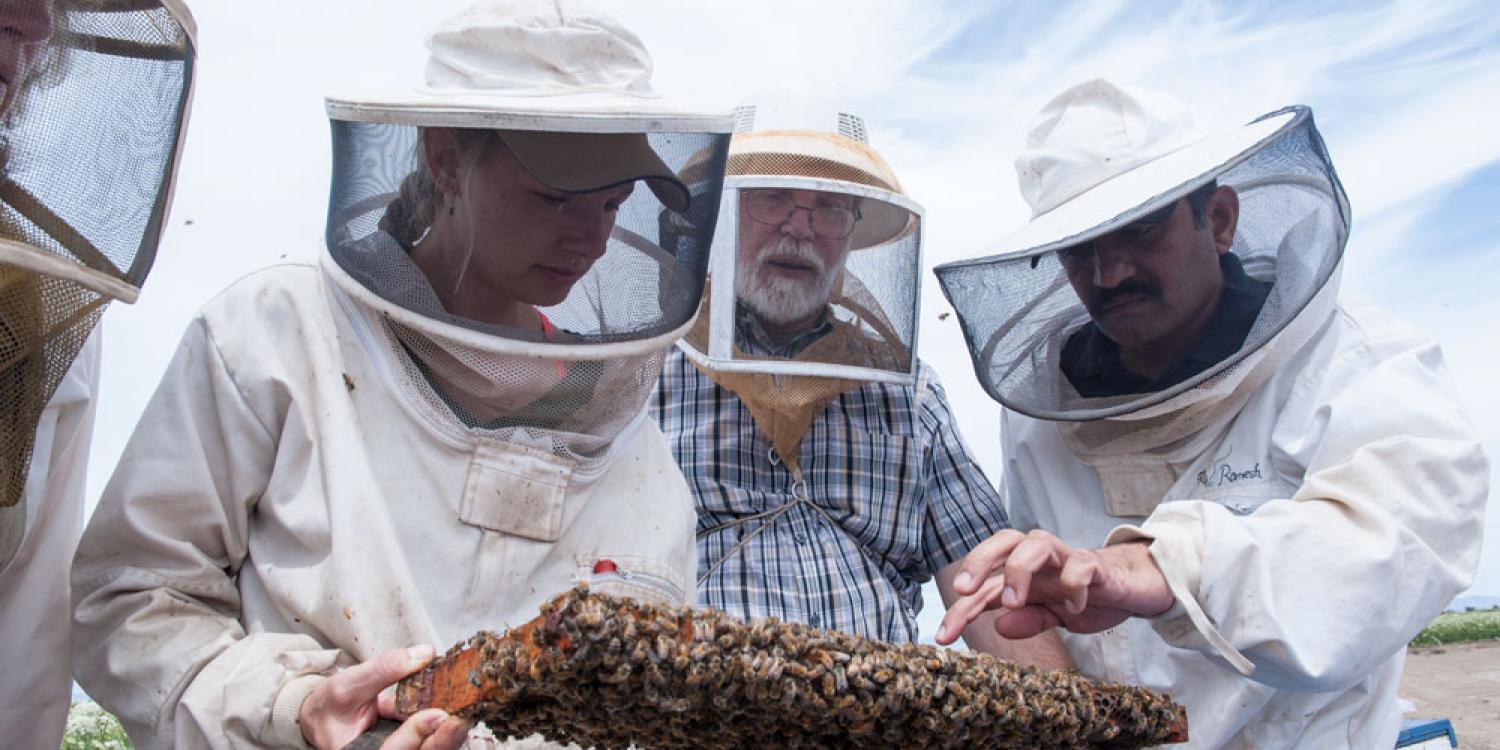
Honeybees are crucial pollinators for many crops, including apples, blueberries, cherries, carrots, clover, melons, almonds and broccoli. Nationwide, they pollinate an estimated $20 billion in food crops each year. But the total number of managed honeybee colonies has steadily decreased over the last 50 years, far below the number needed to meet U.S. pollination recommendations.
According to the Oregon Bee Project, Oregon’s honeybee colonies have been beset by significant new pest and disease pressures over the last few decades; this has led to poor colony survival and substantially increased beekeeper input and labor costs. The bees are also susceptible to some pesticides that are used in agriculture, forestry, vector control, and landscape management.
Oregon State University Extension Service and Agricultural Experiment Station researchers are making sure that these hardworking insects are healthy and thriving. Directed by Ramesh Sagili, associate professor of apiculture and honeybee Extension specialist, the OSU Honey Bee Lab focuses its research, Extension, and teaching efforts on three key areas: honeybee health, honeybee nutrition, and honeybee pollination.
OSU has over 100 honeybee colonies across four research apiaries, totaling about 4 million honeybees. The majority of the research is conducted in collaboration with stakeholders that include beekeepers and farmers. The lab is estimated to save Oregon's beekeepers about $5 million a year in reduced colony losses and costs for medications.
Honeybees face significant nutritional challenges. The lab is among the very few leading labs in the United States conducting both basic and applied research to understand and improve honey bee health by providing better nutrition. Some examples of nutrition research include understanding the micronutrient (for example phytosterol) needs of honey bees, evaluating supplemental forage for bees, investigating nutritional composition of pollens available to bees, and examining pollen diversity available to bees during crop pollination.
The lab conducts research to better understand the biology of Varroa mites – ecto-parasites that plague honeybees – and the dynamics of mite populations in honey bee colonies, while also testing the efficacy of different mite control products. The lab provides timely information to beekeepers regarding mite population levels in their hives by sampling their hives at regular intervals.
Lab researchers also study the impacts of pesticides on honeybees with the goal of reducing pesticide exposure and helping farmers choose pesticides that are the least toxic to bees. Some examples of research related to pesticides include: evaluating the toxicity and physiological effects of commonly used pesticides on honeybees, understanding differences in chronic oral toxicity of pesticides to honeybee workers of different age groups, and understanding the exposure of honey bees to pesticides in the landscape.
The lab's pesticide findings were incorporated into a major 2016 revision of the OSU Extension guide "How to Reduce Bee Poisoning from Pesticides," now featuring an accompanying smart-phone app. Other publications of note produced by the lab include "Sampling for Varroa Mites from a Honey Bee Brood Nest," and "Honey Bee Colony Maintenance Expenses: Supplemental Feed, Requeening and Medication."